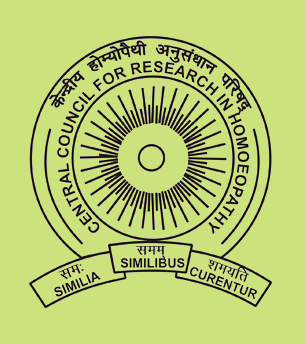Indian Journal of Research in Homoeopathy
Keywords
AIDS; homoeopathy; HIV infection; open-labelstudy; calcaea carbonica; arsenicum album; bryonia alba; rhus toxicodendron; pulsatilla nigricans; hepar sulphuris calcareum; mercurius solunuils; thuja occidentails; nux vomica; tuberculinum.
Article Type
Original Article
Abstract
Background & Objectives: Encouraging results obtained from the pilot study and randomized double blind placebo controlled trial in HIV infection prompted Central Council for Research in Homoeopathy (CCRH) to carry out a multi-centric clinical trial in HIV infection at three centers between the period 1989-2005 with an objective to evaluate the role of homoeopathic medicines in delaying the progression of infection and to observe whether objective laboratory parameters corroborate with clinical improvement. Methods: An open-label, multicentric, prospective, observational study was carried out during the period 1989-2005; 1600 people with HIV infection from three centers were enrolled for the study. Clinical staging of followed for all enrolled patients for Disease Control and Prevention (CDC), Atlanta, USA, Wological functions, and presence or absence of minow-up visit, changes in the body weight, physiological functions, and presence or absence of minor or major opportunistic infections were recorded. CD4/CD8 cell count estimation was done only at Mumbal centre from 1994 onwards. Results: Data of 870 patients who were followed up were evaluated. Out of these, 534 patients maintained asymptomatic status for a period varying from 3 to 10 years and 222 patients improved in varying degrees. 52 patients worsened with clinical progression of the disease, 24 patients did not show any improvement and 04 died. It was observed that intercurrent allments such as oral candidiasis, oral ulcers, loss of appetite, generalized pruritic dermatitis etc., responded favorably to homoeopathic medicines. Calc.carb. (93.61% of 47), Arsenic alb.( 90.26% of 113), Bryonia alb. (89.79% of 147), Rhus tox. (84.07% of 157), Pulsatilla (83.78% of 148), Hepar sulph. (83.33% of 42), Merc.sol. (81.75% of 137), Thuja (80.95% of 42), Nux vom. (80.80% of 99), Tuberculinum (79.27% of 111), Silicea (77.41% of 62), Sulphur (76,38% of 144), Kall bl. (76.19% of 21), were the most useful medicines. Sustained psychological support influenced the health of the people with HIV Infection. Three hundred and six patients under this study had been followed up for Immunological assessment through CD4 investigations. The changes in the CD4 level of these 306 patients showed some positive results. Conclusion: Homoeopathic medicines could help in prolonging the life of asymptomatic patients, delaying or slowing down progress of infection and maintaining the quality of life of the patients. The results obtained suggest a positive role of homoeopathic medicines in managing people with HIV infection. A further study with additional laboratory parameters like periodical estimation of CD4 status and viral load estimation is needed for scientific validation.
Digital Object Identifier
10.53945/2320-7094.1846
Publisher
Wolters Kluwer India Pvt. Ltd.
How to cite this article
Mishra N, Singh V, Dey SK, et al. Homoeopathic medicines in the management of HIV infection: An observational study. Indian J Res Homoeopathy 2008;2:31-46. doi: 10.53945/2320-7094.1846


